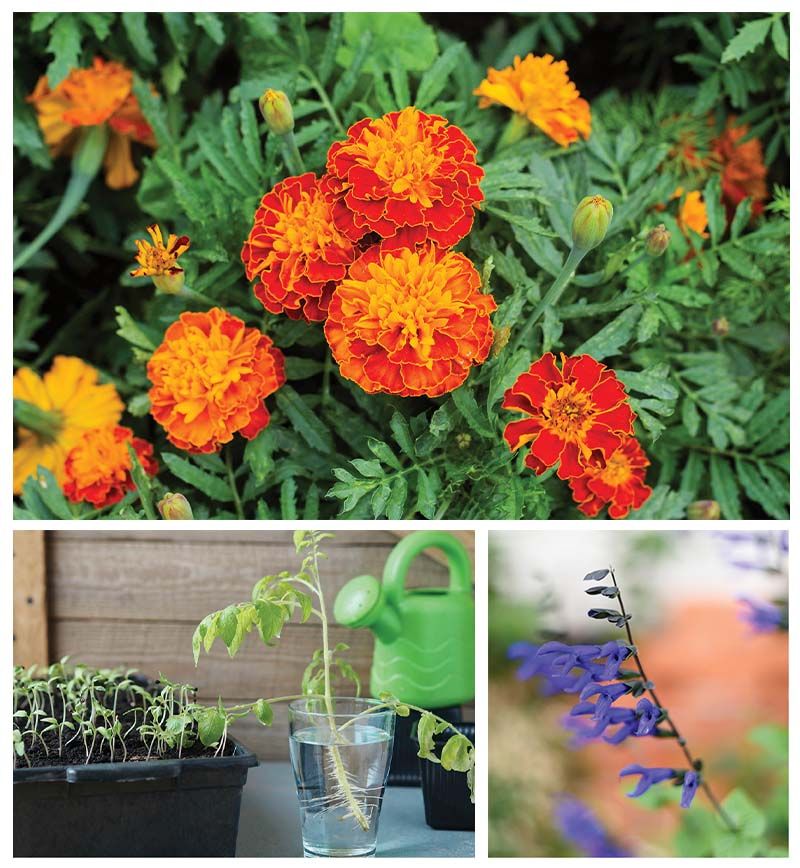Smart tricks for staging a July revival

(Clockwise from top) Plant marigold seeds for a second wave of summer color. Salvia can benefit from pruning this time of year. Take cuttings from your tomato plants and root them in water for a fall crop.
By July, Charleston’s semitropical swelter has taken a toll on even the most well-tended green spaces. Once-vibrant annuals and perennials may be looking straggly and sun-fried. Weeds are moving in, and heat-weary gardeners are feeling less than inspired. But don’t give up! Charleston garden editor Joan McDonald shares five tips for freshening your summer landscape.
1. Prune annuals and perennials. If the likes of coneflowers, coleus, and salvia are leggy, looking out-of-scale, or crowding container-mates, cut them back by a third. This will encourage the plants to fill out with new foliage, and in the case of flowering species, to make more blooms. It also decreases their water needs during these sizzling weeks.
Next, apply compost or a slow-release fertilizer such as Plant-tone, and water well.
2. Root cuttings. “Fall is like the Lowcountry’s second spring,” says McDonald. “Take cuttings of herbaceous annuals in your garden—tomatoes, basil, coleus, and pineapple sage are all easy—and start another crop.”
Clip six to eight inches off the tip of a healthy stem. Leaving a couple sets of leaves at the top, remove the rest. Pop the cutting in a vessel of water and place it on a windowsill in dappled sunlight. When roots form in a week or two, transfer the plant into the garden.
3. Seed fast-growing blooms. A fresh batch of heat-loving annuals such as sunflowers, zinnias, marigolds, and celosia will keep color coming into autumn.
You can sow the seeds directly into the ground, making sure to press down for good seed-to-soil contact. Or plant them in pots kept outside in a location that receives plenty of indirect light. Move these “starts” into the garden once they’re a couple inches tall, keeping the soil damp until they’re well-established; this may mean watering twice a day.
4. Recharge soil. “By the time plants finish their big spring show, they’ve absorbed a lot of nutrients from the soil,” notes McDonald. Top-dress trees, shrubs, and your kitchen garden with two to three inches of compost. You can also top-dress containers, or remove the root ball entirely, shake off loose dirt, and repot with fresh soil. Prune the plant and water until liquid drains from the bottom of the pot. Finish with a layer of mulch.
5. Weed vigilantly. “It’s amazing how much better your plants will perform without competition,” McDonald says. “Try to pull weeds while they’re small so you’re less likely to disturb the roots of growers you want to keep.” The chore is easiest after a light rain.